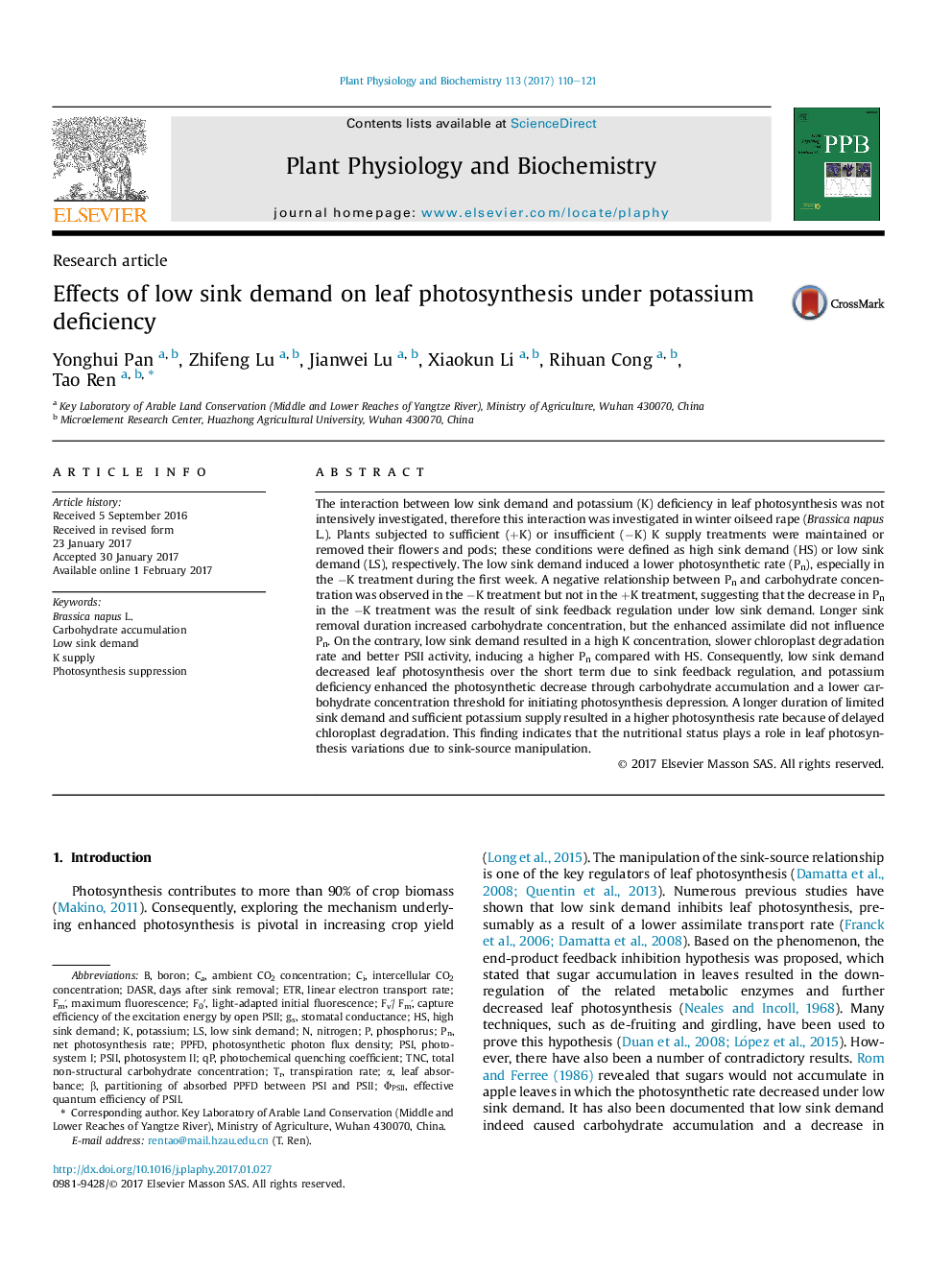| کد مقاله | کد نشریه | سال انتشار | مقاله انگلیسی | نسخه تمام متن |
|---|---|---|---|---|
| 5515601 | 1541908 | 2017 | 12 صفحه PDF | دانلود رایگان |
- Low sink demand decreased leaf photosynthesis in a short term.
- Potassium deficiency enhanced the photosynthetic decrease imposed by low sink demand.
- A longer duration of limited sink demand and sufficient potassium supply resulted in a higher photosynthesis rate.
The interaction between low sink demand and potassium (K) deficiency in leaf photosynthesis was not intensively investigated, therefore this interaction was investigated in winter oilseed rape (Brassica napus L.). Plants subjected to sufficient (+K) or insufficient (âK) K supply treatments were maintained or removed their flowers and pods; these conditions were defined as high sink demand (HS) or low sink demand (LS), respectively. The low sink demand induced a lower photosynthetic rate (Pn), especially in the âK treatment during the first week. A negative relationship between Pn and carbohydrate concentration was observed in the âK treatment but not in the +K treatment, suggesting that the decrease in Pn in the âK treatment was the result of sink feedback regulation under low sink demand. Longer sink removal duration increased carbohydrate concentration, but the enhanced assimilate did not influence Pn. On the contrary, low sink demand resulted in a high K concentration, slower chloroplast degradation rate and better PSII activity, inducing a higher Pn compared with HS. Consequently, low sink demand decreased leaf photosynthesis over the short term due to sink feedback regulation, and potassium deficiency enhanced the photosynthetic decrease through carbohydrate accumulation and a lower carbohydrate concentration threshold for initiating photosynthesis depression. A longer duration of limited sink demand and sufficient potassium supply resulted in a higher photosynthesis rate because of delayed chloroplast degradation. This finding indicates that the nutritional status plays a role in leaf photosynthesis variations due to sink-source manipulation.
Journal: Plant Physiology and Biochemistry - Volume 113, April 2017, Pages 110-121
